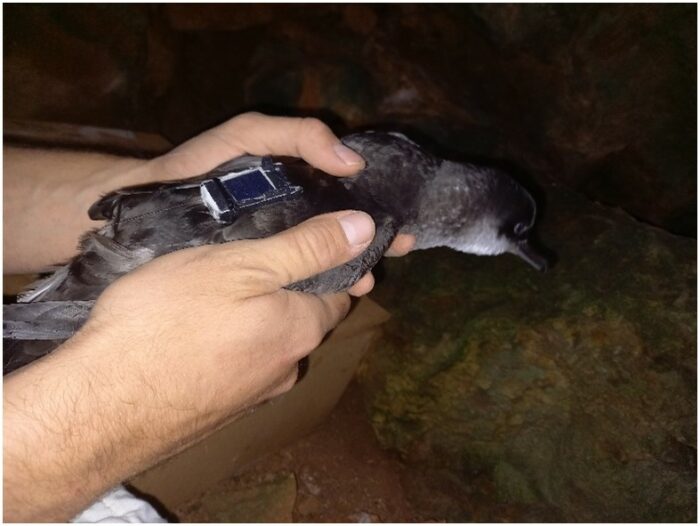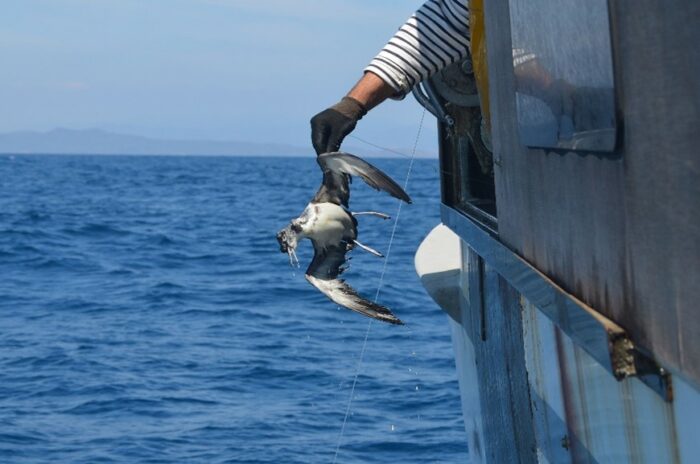The Yelkouan Shearwater is one of the resident Mediterranean seabirds. Malta is an important place for the species as it holds 10% of the global population. During the 2021 breeding season, BirdLife Malta’s seabird team equipped some Yelkouans with a GPS tracking device. As part of the LIFE PanPuffinus! project, the team followed their journey across some parts of the Mediterranean Sea to know more about the Maltese colonies.
Have you ever wondered where an animal went once out of sight? With science and technology, biologists can now access this private part of animals’ lives. Tracking seabirds, like the Yelkouan Shearwaters, is really important in ecology to understand their behaviour, where they are going, where they are feeding, how long they are staying at sea…apart from being also exciting!
After, with this information, we can focus the conservation efforts to the areas where shearwaters most frequently forage. These areas might also be the areas where the species is most at risk of accidental bycatch, and therefore where the team will put most effort into testing mitigation measures as far as possible.
Tracking seabirds also informs the team on the biology of the birds, what are their capabilities. We discovered hidden facets of the seabirds that we are very keen to share with you.
How do we follow them?
Here is the background. Yelkouans are sharing the parenthood fairly between male and female, one is going at sea when the other is incubating the egg or taking care of the chicks for the first few weeks. So, they always come back to their nest location throughout the breeding season (Feb-July), which allows biologists to deploy a GPS tracking device and retrieve it later. After, to follow birds at sea and learn their interesting habits, we needed a good tracking device: the tracking tag AxyTrek from TechnoSmArt seemed perfect for the job. It took a GPS point every few minutes, but also the altitude and speed of the bird and it had pressure sensors which recorded diving depth below the sea surface. All of that in a small equipment weighing only 3% of the bird’s mass to not disturb it during its everyday life. Having this type of data permits to know their biology, where they are foraging and at what time they are doing so. We can also know when they are flying or rafting or diving with the difference of speed and with the pressure sensor, we know at what depth they are able to dive.
There is always a risk to put a device on seabirds, after a time passed at sea, we need to retrieve it directly by catching the bird again on the same nest site, and they are facing more and more threats at sea and sometimes never come back. The data analysis on the retrieved devices gives a glimpse into their life and their amazing capabilities.
Their incredible capabilities
One of the several amazing capabilities of seabirds is to travel long distances to find food or to migrate without ever touching land, several hundreds of kilometres if needed. During the breeding season they need an important amount of food to feed their chick until it would be able to fledge. In 2021, the equipped shearwater travelled and foraged in a very large area from the Gulf of Gabes in Tunisia, 400km away to the southeast coast of Italy. We can see that the land-based colonies on Malta use it as a central point in their foraging journey towards Italy or Tunisia.
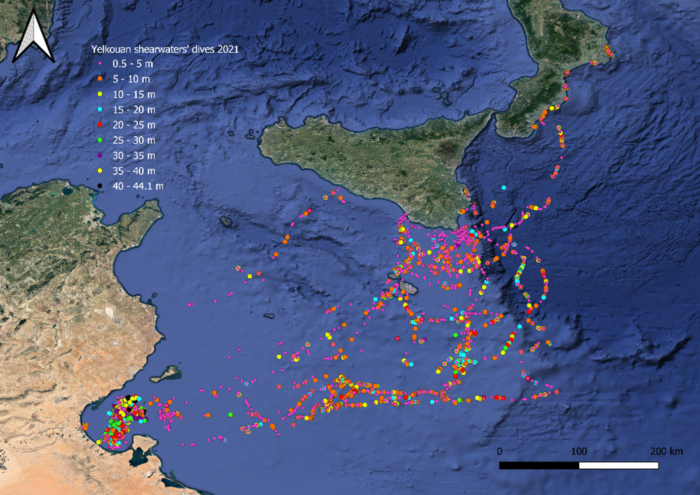
Shearwaters are forming lifelong couple bonds, and for it to work between them over the years they need to succeed raising the chick until it is able to fly. It is a very difficult and demanding task and therefore they are raising only one chick a year. When they need to go foraging, sometimes they are going back and forth from the colony to Tunisia in only three days but in other times if food is scarcer, they can stay at sea for quite long periods. During the incubation period, one bird spent 11 days at sea, leaving the other parent waiting patiently sitting on the egg to keep it warm without any food, living on its reserves! They really have a strong will and relationship as they succeeded to raise the chick until it fledged!
With our data we can differentiate their foraging time, when they dive, from their resting/rafting time when they are floating on the water. Yelkouan Shearwaters are swimmers, they dive from the surface and go down to look for food. With the pressure sensors in the tag, we know when they dive underwater to catch fish or molluscs and to what depths. Most of their dives are between 0 to 15 meters deep but on the picture you can observe a depth profile, and this bird went down to 44 metres! As far as we know, this dive is the world record registered for a Yelkouan Shearwater!
The more we learn about the Yelkouan Shearwater, the more we are happy to work on its conservation and to discover new impressive facts about it. Succeeding to gain this information permits us to help focus on certain areas to mitigate the threats these birds are facing.
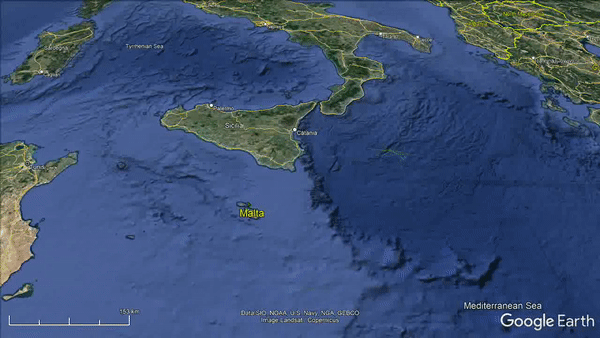
A journey under threats!
It is a dangerous journey for a Yelkouan Shearwater as the threats have increased nowadays. Seabird conservation is a difficult field because we need to mitigate threats at sea but also on land.
When they are at sea foraging for fish, shearwaters can accidentally get caught in fishing gear and drown. Identifying the critical zones will help to work more efficiently with fishers to prevent shearwaters from approaching fishing activities. Industrial scale fishing is provoking food scarcity, overfishing the fish stocks makes the chick-raising more difficult by staying longer at sea or having less to eat. With the foraging data we can raise awareness to politicians and the general public. Climate change can disrupt the food chain too and is an issue for seabirds. They also suffer from marine pollution by eating small pieces of plastics. Once in the body, it can accumulate and starve them or cause a toxic reaction. Light pollution is also a problem, bright lights can be very confusing for young shearwaters who are leaving the nest for the first time. Unable to find their way to sea, fledglings may become grounded on land and need to be rescued.
On land, they are vulnerable to predation by invasive species, such as rats. The predation concerns the eggs and chicks as they cannot defend themselves. The seabird team is reducing the rat population near the colonies and trying to organize a better waste management. Yelkouan Shearwaters are also disturbed and stressed directly in the colony by loud noises, such as music and boat engines too close to the cliffs.
The Yelkouan Shearwater is suffering from many threats that an already declining species wouldn’t want during their journey.
Working toward the aim of LIFE PanPuffinus!
It is always very interesting to learn more about a species, especially when all your work is aiming to its preservation. It was very exciting to equip seabirds with AxyTrek tag from TechnoSmArt to be able to follow their private life and capabilities.
All those capabilities make the Yelkouan Shearwater an awesome seabird which deserves to be protected because nowadays it is more and more vulnerable and under threat. The population keeps decreasing due to climate change, overfishing, bycatch and light pollution at sea but also chick and egg predation by invasive species and noise disturbance on land.
From the tracking data we learnt more about the Maltese Yelkouan Shearwater, it gave us valuable information on its biology and behaviour. Having this information helps to focus the conservation effort on critical areas, to mitigate threats they are facing.
The LIFE PanPuffinus! project is working across the Mediterranean Sea with scientists from BirdLife Malta, HOS in Greece, SPEA in Portugal, SEO in Spain and LPO in France. Altogether, we are working to improve the conservation status of the Yelkouan Shearwater and the Balearic Shearwater.
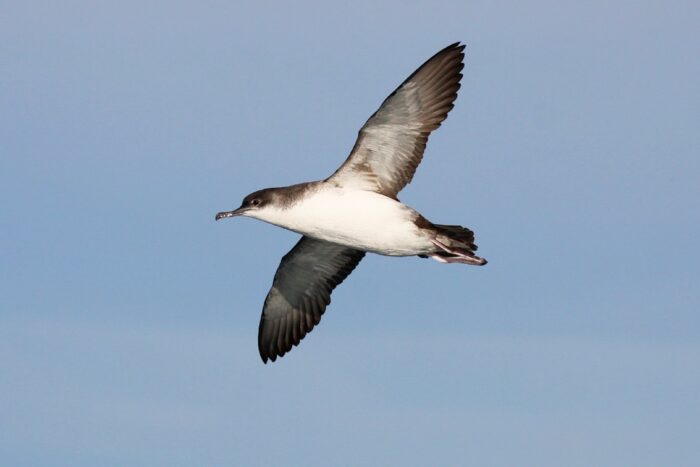
By Marc Schruoffeneger, Seabird Conservation Assistant


